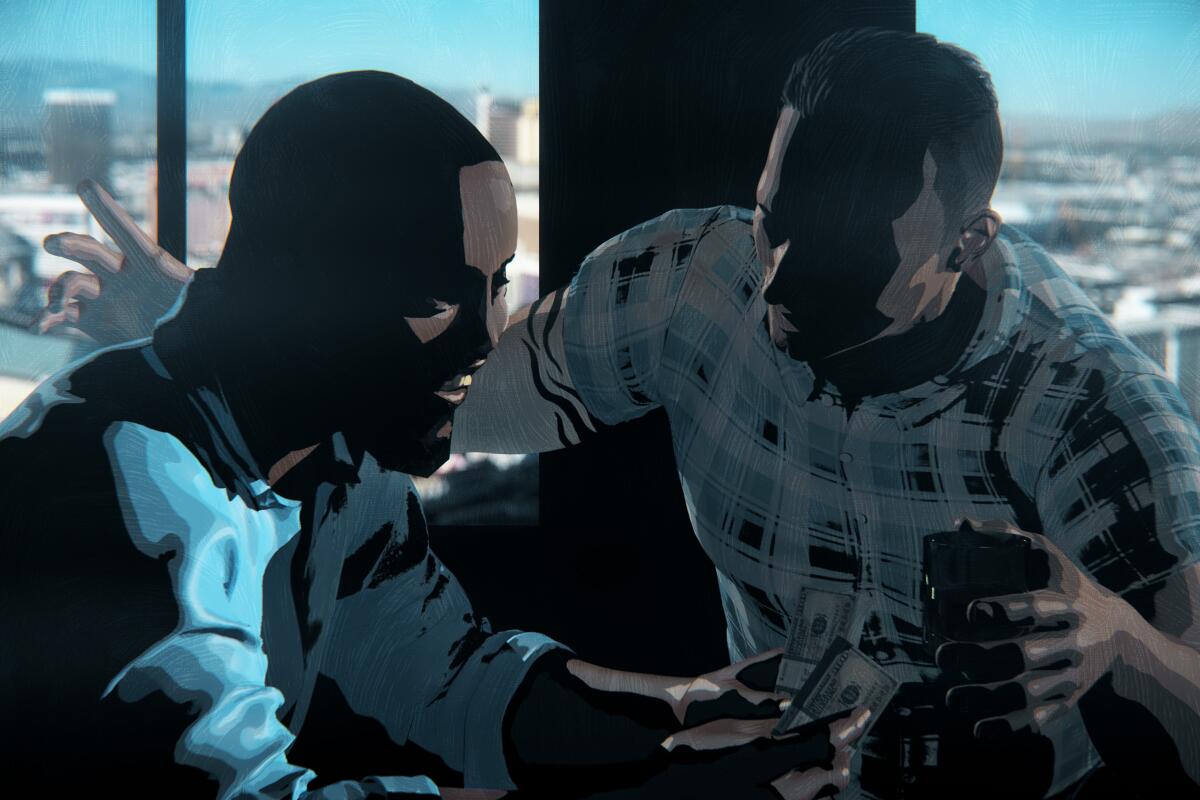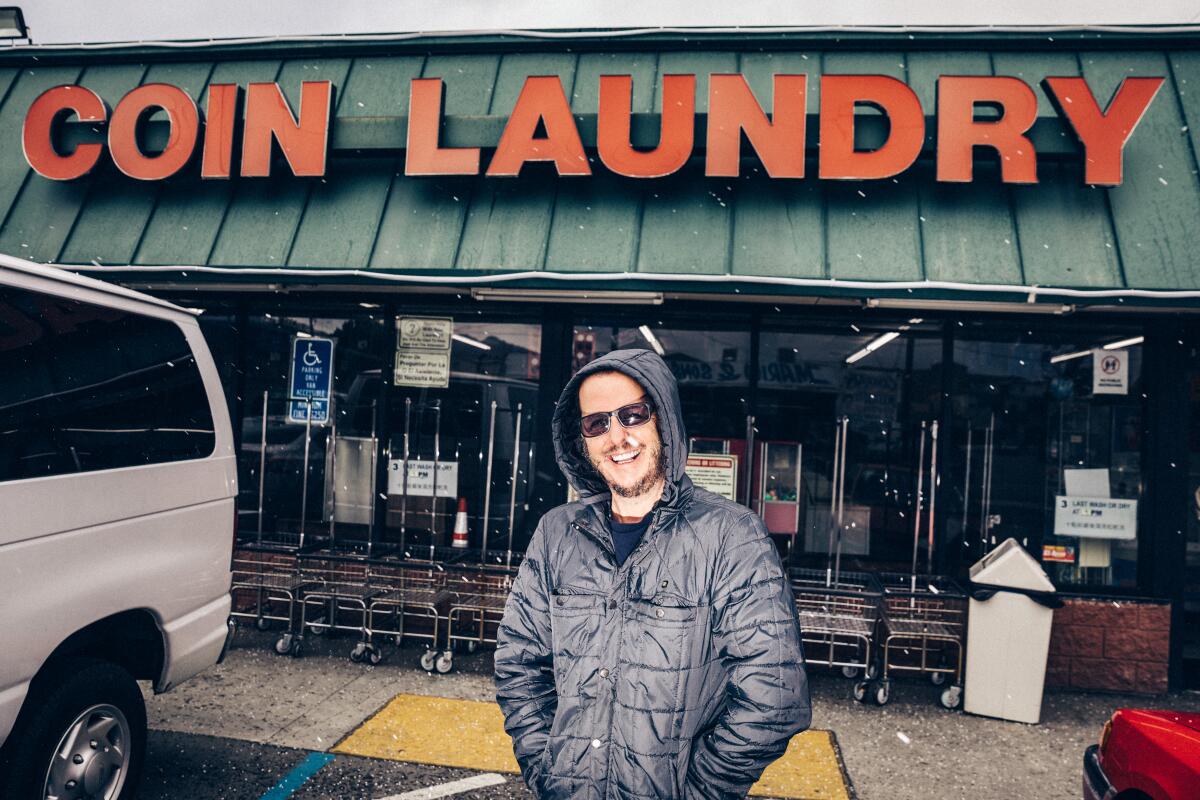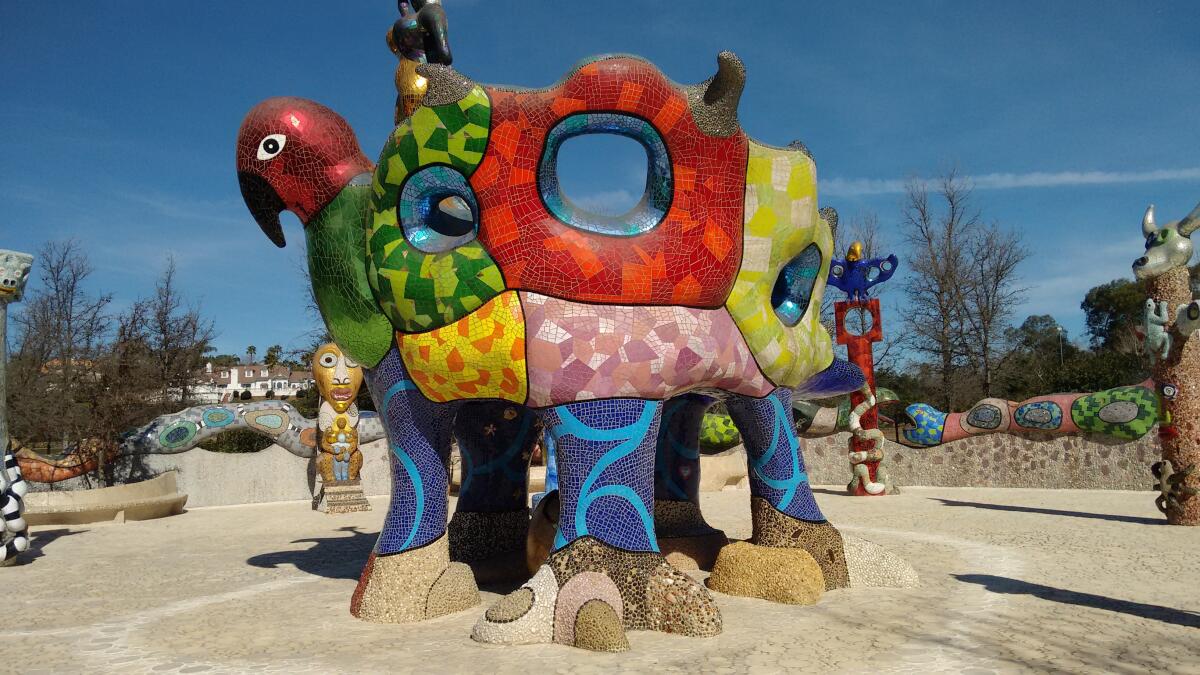Investigating the FBI’s college basketball corruption probe

- Share via
Good morning, and welcome to the Essential California newsletter. It’s Friday, March 10. I’m Nathan Fenno, an investigative reporter focused on sports.
Few events on the sports calendar rival the NCAA’s annual basketball extravaganza. Buzzer-beating shots. Triumphant underdogs. Name-brand schools chasing a championship. And, of course, tens of millions of fans filling out brackets to predict the outcome of each game.
The three-week tournament — which tips off next week and includes first- and second-round men’s games at the Golden 1 Center in Sacramento — generated more than $800 million in television revenue for the NCAA last year. That’s dwarfed by the $3.1 billion the American Gaming Assn. projected would be wagered on the 2022 tournament. Even nosebleed seats for the men’s title game in Houston this year are selling on the secondary market for $224 each. March Madness means big money.
Money was at the center of my investigation published this week that reexamined the high-profile FBI investigation into college basketball corruption. The probe, it turns out, had a misconduct scandal of its own.
Five and a half years ago, federal authorities unveiled the long-running college basketball investigation that had resulted in the arrest of 10 men, including assistant coaches at USC, Arizona, Auburn and Oklahoma State, on charges like conspiracy to commit bribery and wire fraud.
“For the 10 charged men, the madness of college basketball went well beyond the Big Dance in March,” Joon Kim, then-acting U.S. attorney for the Southern District of New York, said at a news conference on Sept. 26, 2017.
William Sweeney, then-assistant director in charge of the New York FBI office, followed up with an ominous comment that became a tagline for the investigation. He warned would-be miscreants that “we have your playbook.”
I wrote about that news conference when it happened. It’s difficult to overstate the shock waves the investigation sent through the sport. Upsets and full-court presses had been replaced by wiretaps and undercover FBI agents. One headline described it as “Armageddon.” College basketball seemed certain to be upended.
But the hype didn’t match the reality, like so many things in the probe that investigators code-named Ballerz.
Over the last few years, I’ve gathered thousands of pages of records from the case, including court testimony, text messages, intercepted phone calls, emails, internal FBI performance reviews and other documents. Those helped me conduct an extensive reassessment of the investigation.
The records tell a gripping story — with some details that haven’t emerged until now. The alleged wrongdoing that seemed so damning when presented by authorities during the news conference turned out to be a lot murkier. Careers were wrecked. Five men were sent to federal prison. And lurking in the shadows all these years — consigned to sealed court filings or vague mentions during hearings and in news stories — was misconduct by the lead FBI agent on the case.
The saga involves race — all four of the coaches who were charged are Black — and questions about NCAA rules that until recent years barred athletes from profiting from their name, image and likeness; what crimes are worth the federal government leveraging vast resources to combat; and how federal authorities treat one of their own when they end up on the wrong side of the law.
You can read the story here: “How an FBI agent’s wild Vegas weekend stained an investigation into NCAA basketball corruption.”
And now, here’s what’s happening across California, from Ryan Fonseca:
Note: Some of the sites we link to may limit the number of stories you can access without subscribing.
L.A. STORIES
A new Korean American history museum was supposed to open last year. But construction of the first-of-its-kind center has yet to begin in Koreatown. LAist
The Oscar-nominated film “Stand and Deliver,” set in East L.A. and based on a real story, turned 35 this year. L.A. Taco has a photo-rich history of the film’s production at East L.A. and Boyle Heights schools, and what the campuses look like today. L.A. Taco
Check out "The Times" podcast for essential news and more
These days, waking up to current events can be, well, daunting. If you’re seeking a more balanced news diet, “The Times” podcast is for you. Gustavo Arellano, along with a diverse set of reporters from the award-winning L.A. Times newsroom, delivers the most interesting stories from the Los Angeles Times every Monday, Wednesday and Friday. Listen and subscribe wherever you get your podcasts.
POLITICS AND GOVERNMENT
San Francisco and Los Angeles are losing residents, but some California suburbs are booming. Here’s what the data show. Los Angeles Times
Roughly 25% of Californians either lack traditional bank accounts or pay big fees to payday lenders or check-cashing services. The state is exploring how to create a fee-free public banking system to help disadvantaged consumers. CalMatters
CRIME, COURTS AND POLICING
A Black California couple has settled a lawsuit with a home appraisal firm over racial discrimination claims. Tenisha Tate-Austin and Paul Austin’s home in Marin City was originally deemed to be worth $995,000 by an appraiser. But when the couple removed family photos and African-themed art, and had a white friend pose as the owner, a different appraiser put the home’s value at $1,482,500. Los Angeles Times
During the height of the pandemic, Santa Clara County officials tracked mobile phone data to map congregants in an effort to prove a church was violating public health orders. That’s according to court documents first reported by journalist David Zweig. The “geofencing” and other surveillance measures the county used are raising the eyebrows of civil rights experts. The Mercury News
Support our journalism
HEALTH AND THE ENVIRONMENT
Roughly 30 million gallons of partially treated wastewater spills into the Pacific each day from an international treatment plant in San Diego — and a fix isn’t expected anytime soon. The plant has been overwhelmed by diverted sewage from Tijuana after a major pipeline broke in August. San Diego Union-Tribune
An L.A. woman is on a mission to destigmatize Latino mental health. Through her Educated Chola brand, Rosa Valdes uses humor in her line of T-shirts, stickers, mugs and jewelry to encourage others in the Latino community to talk about anxiety, depression and other mental health issues. Los Angeles Times
CALIFORNIA CULTURE

A San Fernando laundromat played itself in the multi-Oscar-nominated “Everything Everywhere All at Once.” Fans of the beloved universe-hopping family film are flocking to the Valley strip mall that’s home to Majers Coin Laundry. The laundromat’s owners reflect on how the movie mirrors aspects of their own lives. Los Angeles Times
The road trip is practically a California institution. If you’re looking for a change of scenery over spring break, here are 11 journeys / destinations (depending on your perspective) to explore. Los Angeles Times
Free online games
Get our free daily crossword puzzle, sudoku, word search and arcade games in our new game center at latimes.com/games.
AND FINALLY
Today’s California landmark comes from Jan Rasmussen of Lakewood: Queen Califia’s Magical Circle in Escondido.

Jan writes:
Niki de Saint Phalle’s [art exhibit] is a delight to visit. Both kids and adults will find the large sculptures covered in colorful mosaics fun to explore.
What are California’s essential landmarks? Fill out this form to send us your photos of a special spot in California — natural or human-made. Tell us why it’s interesting and what makes it a symbol of life in the Golden State. Please be sure to include only photos taken directly by you. Your submission could be featured in a future edition of the newsletter.
Please let us know what we can do to make this newsletter more useful to you. Send comments to essentialcalifornia@latimes.com.
Sign up for Essential California
The most important California stories and recommendations in your inbox every morning.
You may occasionally receive promotional content from the Los Angeles Times.







